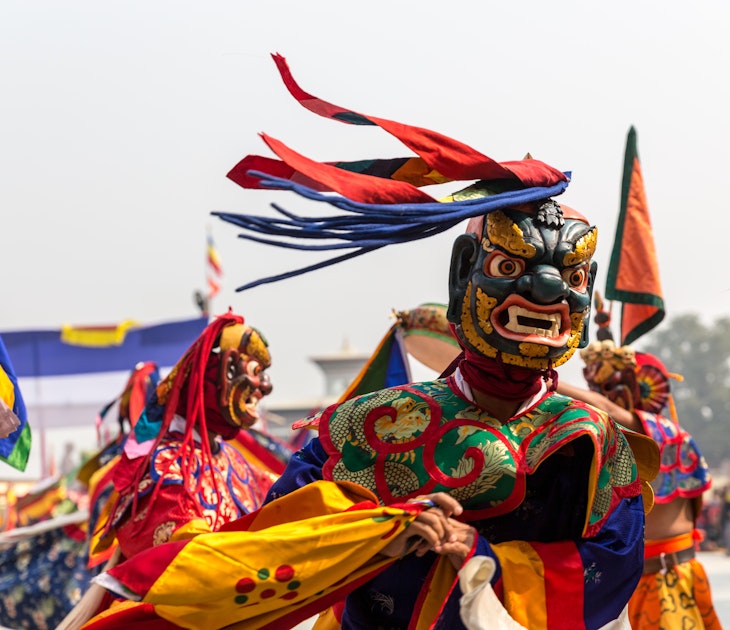
A journey to meet the reindeer tribe of northern Mongolia

Aug 5, 2020 тЂ 5 min read

Much of the journey was only accessible by horseback ТЉ Fabienne Fong Yan / ЯуИлСљКЯВЪМДЪБПЊНБ
тHow do you feel about spirituality and remote nature?т Aminaa asks. My eyes are already wandering far beyond the city, where I can see the sun set behind brown mountain ranges in a mystical golden glow.
I arrive in Mongolia, the Land of the Eternal Blue Sky, in October. A friend recommended two experienced travel guides who would be going for their last trip of the season in the far north and Aminaa and her husband Khuyagaa meet me at the airport of Ulaanbaatar. Our travel plans: drive up north to the Taiga to make camp in the valley of their ancestors, meet nomadic families, ancient shamans, and trek towards the legendary reindeer herder tribes. The trip would take me to the heart of Mongolian culture and maybe even further.
Entering the Enchanted Valley
Darkhad Valley is anything but accessible. After two days of driving т three-quarters of which are spent off-road through rocky valleys and cow-grazed mountains т we near Tsagaannuur, the village on the shores of the White Lake. At the entrance of the valley stand shamanic totems, giant teepee-shaped cones made of colorful textile stripes battered by the wind.

By the time we reach the village itself, we have already passed into another world. We see mirror lakes where waters cannot be distinguished from sky and snow-capped mountains loom before the horizon. Our host Tsendmaa welcomes us with a hot pan of horsemeat (organs included) and homemade flat noodles. I learn that horsemeat is consumed in wintertime because it generates body heat.
A large ger (yurt) has been set at the back of Tsendmaaтs house for guests. Sleeping in a ger is part of experiencing the nomadic lifestyle, although I will learn later that nomads donтt stay in gers all year round. This one has proper beds and pillows, extra blankets, and a big oven at the center that can keep us extra-warm for long hours spent chatting, cooking and sharing meals. Itтs almost luxury!
Horse trekking with nomadic riders
Over the next couple of days, we prepare for our expedition to meet the Tsaatan, the reindeer herder tribe of East Taiga. We don't know yet if they have already left their summer camp but nevertheless we set out to our first stop, some miles up on a plateau. We meet Erdene and his wife Tuvshin, who welcome us in their home, a wooden cabin decorated with warm-toned carpets and blankets with traditional patterns. As usual, the central hearth serves as both heater and oven. It is where Tuvshin prepares the hot milk tea served to whoever enters the house. Traditionally, Mongolian homes are open to visitors any time of the day and milk tea is always ready to be served.

Finally, Aminaa and Khuyagaa get news of the reindeer herders; they are beyond the forest, reachable only on horse or reindeer. тThe number one rule is to not make any brisk move. These horses are semi-wild and will get easily freaked out. The best thing to do is to entrust them with your way, for they know theirs across the Taiga,т weтre told.
I am given an experienced horse. We must get used to each other if we are to cross forests, slippery riverbeds and marshes together. Six of us, plus a horse carrying our equipment, set out in the direction of the reindeer herders' settlement.
Meeting the reindeer herders of East Taiga
The trek to the camp lasts four to five hours. Followed by Tuvshinтs dogs, we ride across forests that are slowly losing their fall colors and turning darker. Yet the eternal blue sky above our heads gives the vast landscapes a warm protective atmosphere. I am silently musing about the magnificence of the nature around us when I see a vision from a fairy tale: a rider is emerging from behind the trees, a few meters away, mounted on a tall reindeer with huge antlers. My heart skips a beat: this is a dream straight from my childhood.

We finally reach the bottom of the valley and on the other bank of the frozen river, the herdersт teepees become visible through the branches. Young reindeer are tied to wooden logs to keep them from running away and when we approach them to play, they happily stroke their antlers on our arms and legs. Itтs the time of year where theyтre losing their antler skin, so they calm the itchiness by stroking against whatever they can find.
As the sun sets over the teepees, the adult reindeer head back to camp with their herders. Some reindeer have huge antlers and the golden sunbeams pierce between them. I feel I have been waiting all my life for such a moment with the majestic animals. Quietly, they lie down on the ground and look at us peacefully.
The next day, nothing makes me happier than mounting a reindeer and covering my hands with salt, so that they come close and lick my palms: salt is like sugar to them, they love it. My guides are already joking about marrying me to a reindeer herder!

I spend the rest of the trip in northern Mongolia with a smile on my face. I canтt start to describe how privileged I felt to travel and discover such a unique, rough, yet hospitable lifestyle with insiders. Itтs a life that is disappearing with climate change as the reindeer find less and less food in the Taiga. Mongolians forecast that in less than two generations, these tribes will no longer exist.
As we leave the enchanted valley in the car that drives back to Ulaanbaataar, my travelerтs heart is filled with happiness and wonder. I even find myself thinking that if I had to stop traveling now, I would gladly accept it because with this journey to what seems like the end of the world, I could sense that I had seen and felt it all. I can gladly go home.
You might also like:
Why you should consider visiting Mongolia in low season
Can visiting lesser-known places offer a better travel experience?
The trip that changed my life: camping with Bedouins in Jordan
This trip was taken before the COVID-19 pandemic. Always check local travel restrictions before booking a trip and follow government health advice.
Explore related stories

Architecture
The ultimate guide to Tibetan Buddhist monasteries: exploring gompas in the HimalayasNov 22, 2024 тЂ 7 min read





 Romance10 wedding anniversary trips for whatever milestone you're celebrating
Romance10 wedding anniversary trips for whatever milestone you're celebratingFeb 15, 2022 тЂ 6 min read
 Family TravelЯуИлСљКЯВЪМДЪБПЊНБ writers look ahead to 2021 and the first trips they can take
Family TravelЯуИлСљКЯВЪМДЪБПЊНБ writers look ahead to 2021 and the first trips they can takeDec 18, 2020 тЂ 11 min read

 Sustainable TravelHow artificial intelligence is helping these companies protect the world's wildlife
Sustainable TravelHow artificial intelligence is helping these companies protect the world's wildlifeSep 30, 2020 тЂ 6 min read
